Homemade bird suet is a perfect treat for your winter friends with feathers! Thankfully, knowing how to make and use it couldn’t be easier!
During the colder months, it can be a bit challenging for birds to find enough food since their natural food sources are typically gone. Most bugs are gone or in hiding for winter and plants with seeds have died off or have been pulled/mowed short.
Even if there are food sources available, they are likely scattered around and not in abundance. In addition, the available seeds may be ruined by excess moisture or other issues that occur with winter weather.
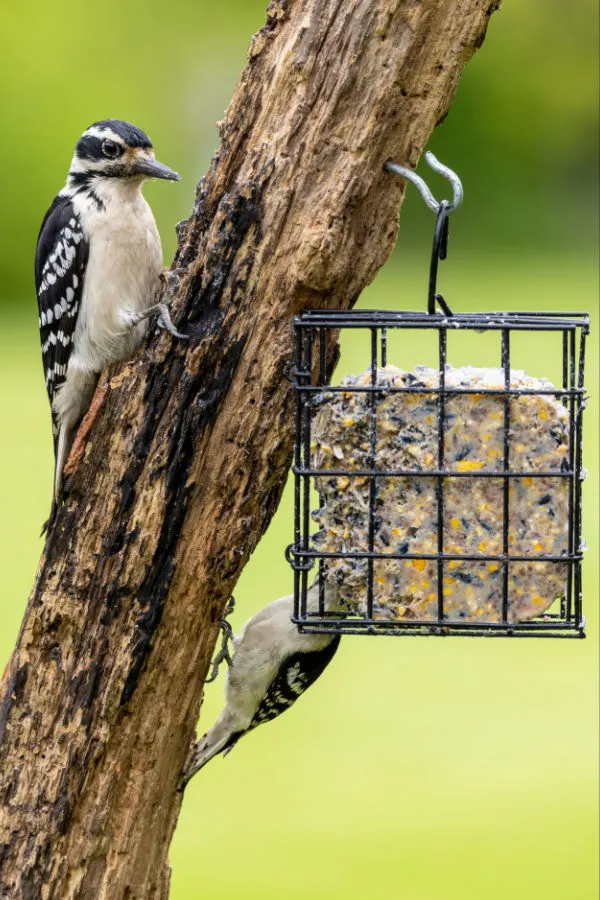
Because of those issues, many birds rely on people setting out birdseed or other supplemental food sources. A bonus to setting out homemade birdseed is that you can enjoy watching an assortment of beautiful songbirds from the comfort of your home.
The birds can be a welcoming sight (and sound) during the long winter months. While setting out birdseed and planting bird-friendly plants like holly bushes is perfectly fine, providing them with homemade bird suet is an excellent way for them to up their calories and provide them with a much better energy source.
What Is Suet
According to Merriam Webster, suet is “the hard fat about the kidneys and loins in beef and mutton that yields tallow.” Tallow is the rendered fat that is often used in products like candles, soaps, lubrication, fuels, and for use in creating shortening.
While not all birds enjoy consuming suet, there are many species that do. Birds like cardinals, jays, wrens, woodpeckers, nuthatches, chickadees, robins, orioles, and starlings all enjoy suet treats. You might even attract small hawks if the feeders are easily accessible.
Which species of birds you attract will all depend on the other ingredients you mix into your suet treat. It will also depend on the type of feeder you use, its location on your property, and what birds you naturally have around your location during the winter season.
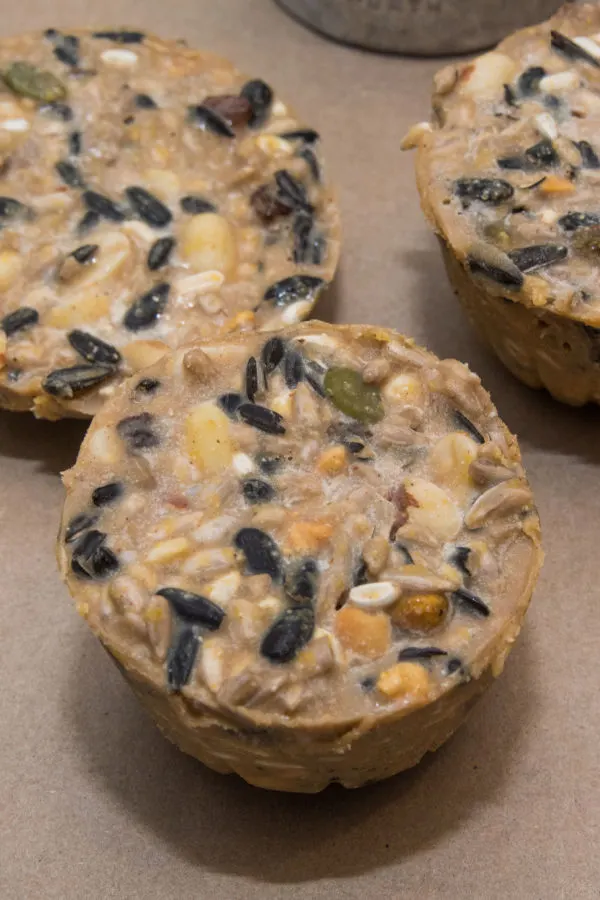
Commercial suet cakes are readily available in stores, but the ingredients can get rather expensive, and you don’t always know what is in them. Thankfully, it’s easy to create your own recipe.
By mixing suet with basic household pantry items, you can create a delicious and hearty treat for those birds. You can also customize the homemade bird suet with additional food items based on what the bird species that you want to attract eats.
Spoilage
Since suet is an animal byproduct, it can and will eventually spoil and become rancid. If temperatures rise above 70º Fahrenheit in your location, the homemade suet will quickly start to melt and spoil.
For this reason, homemade suet treats are best to use in the colder winter months. If you live in a location that has warmer weather during winter, it is best to avoid using suet altogether to feed birds. Or, check to see if you can access commercial suet treats. Most of these are cooked and can be used in warmer locations.
Using Homemade Bird Suet Tips
If you already offer traditional homemade birdseed during the winter months, place your new suet feeders nearby. This allows the birds to easily get accustomed to the new feeders. Choose feeders that are easy to reach and out of harm’s way.
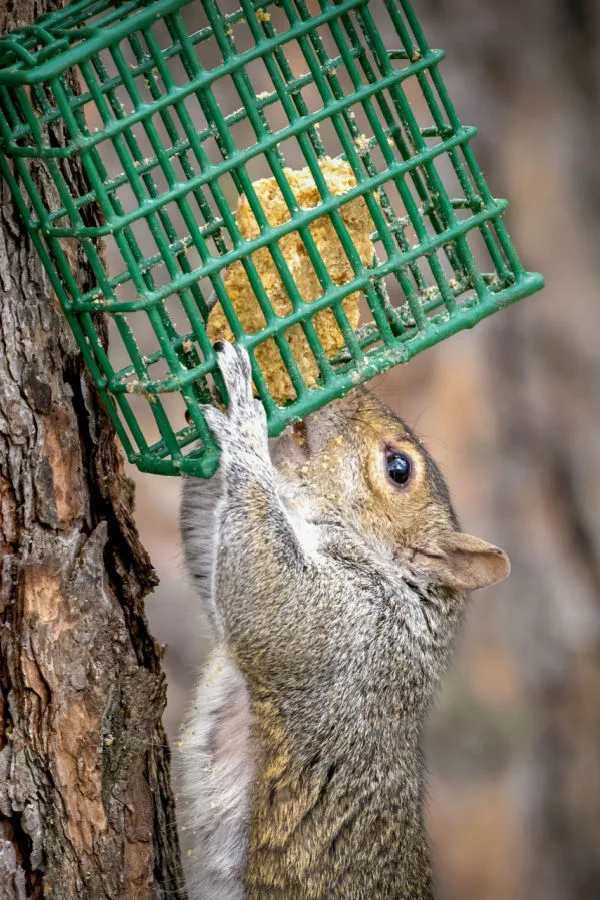
The feeder should have a roof or some kind of protection surrounding the suet if possible. Since Suet is an animal byproduct, keeping it out of the elements will help it to stay fresher longer and help avoid melting and spoiling.
Do not put out large quantities at a time. Only having enough suet for the birds to consume in a few days is best for avoiding unwanted critters. Thankfully, suet keeps perfectly in freezers so you can make a large quantity and then only take out a little bit at a time for feedings.
To help avoid squirrels from enjoying your homemade suet treats, there are a few tricks you can use. Check out “How To Protect Bird Feeders From Squirrels” for three great tips.
Also keep in mind that suet is also appetizing for other critters like raccoons, mice, rats, and even some bears. Keeping feeders up off of the ground and using baffles are your best chances at protecting your homemade suet.
How To Make Homemade Bird Suet
Step One
Cut your fat into small pieces to allow it to melt easier. Place the pieces into a heavy saucepan. Heat the fat slowly over medium-low heat, stirring continually until it has completely melted. Do not allow the mixture to boil or burn. (We have included a printable recipe card at the end of the post as well)
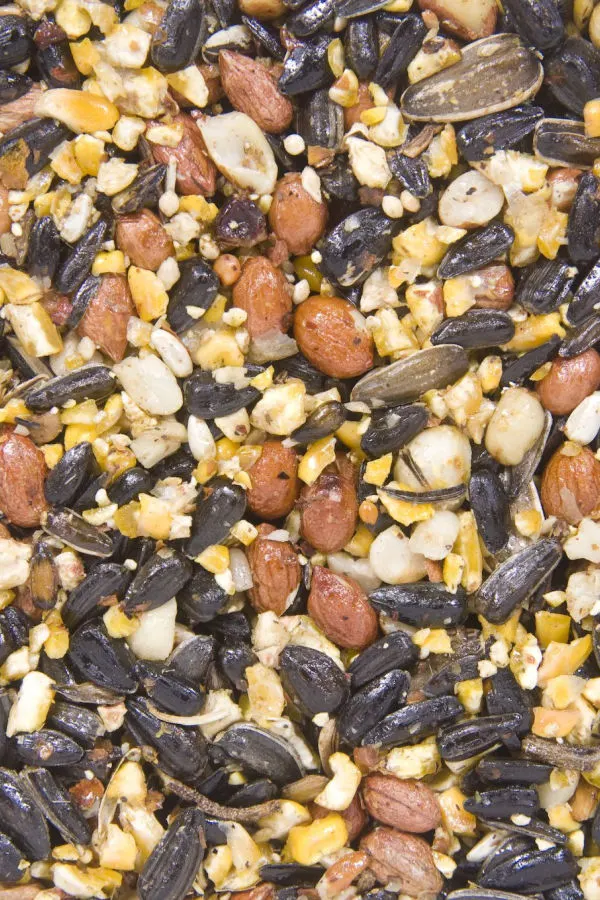
Step Two
Remove the pan from the heat. If needed, strain the melted lard to remove any larger pieces. Add in the peanut butter and stir continually while the peanut butter melts. Once melted, stir in the remaining ingredients until well combined.
You can use any combination of bird seeds, raisins, dried unsweetened fruit, sunflower seeds, or any other unsalted or flavored nuts or seeds you have on hand. This is where you can cater the suet to the specific type of birds you are wanting to attract.
Step Three
Pour the mixture into your containers or molds. Almost any smaller container will work for this as long as you can pop out the suet after it sets. You can also freeze it in larger quantities and cut to size after it is solidified. For an alternative, you can spread the suet on natural items like pine cones for fun, smaller treats.
Step Four
Place the containers into the freezer or refrigerator until the suet has hardened. The amount of time it takes will vary depending on your container size and method of cooling.
You can then pop the treats out of the containers once solidified. Individually wrap them in saran wrap and place them in freezer bags to store long-term. They can last up to a year in your freezer. When ready to use, bring them out and place them outside for the birds to enjoy.
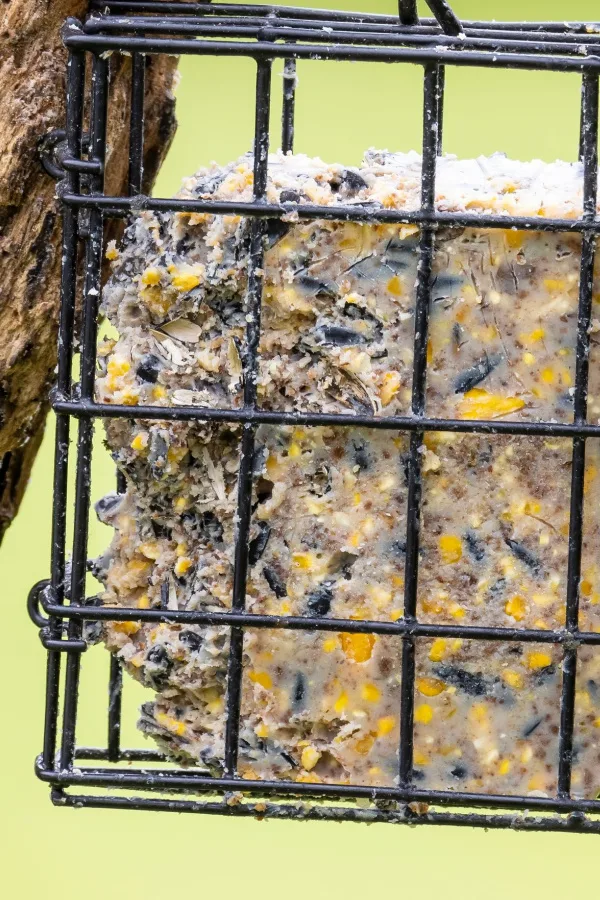
Homemade Bird Suet Recipe
Ingredients
- 1 cup rendered fat (shortening, animal fat, or lard)
- 1 cup crunchy peanut butter
- 2 cups oatmeal
- 1 cup cornmeal
- 1 to 2 cups birdseed, raisins, dried unsweetened fruit, sunflower seeds, or other nuts or seeds
Directions
- Melt fat in a heavy saucepan over medium-low heat. Do not allow the fat to boil. Once completely melted, remove from heat.
- Stir in peanut butter. Once melted, stir in the remaining ingredients and mix until well combined.
- Pour the mixture into small containers. You can use plastic storage containers, silicon molds, or even clean and empty cans. Pack down the mixture with a spatula to remove any air pockets.
- Place containers in the freezer until they have cooled completely and hardened. Remove hardened suet from molds. Wrap in plastic wrap or freezer bags and store in the freezer until ready for use. They can also be cut into smaller pieces and used as needed.
